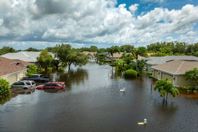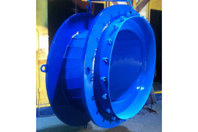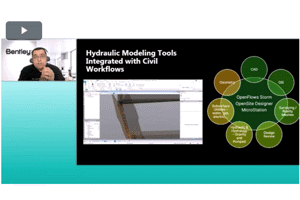STORMWATER MANAGEMENT RESOURCES
-
Accurate storm surge predictions are critical for giving coastal residents time to evacuate and giving emergency responders time to prepare. But storm surge forecasts at high resolution can be slow.
-
There are three potential options to contain floods with tunnels to direct excess water out of Houston to the coast. As researchers who study disaster resilience, we bring complementary expertise to analyzing this complex discussion. Here are what we see as the key factors for the city to consider.
-
Following Tropical Storm Isaias, a damaged reservoir outlet pipe needed fast, custom repair. Learn how a quick response, site assessment, and custom-engineered couplings prevented a major water service shutdown.
-
No one knows more than water utilities how changing climate conditions are impacting the challenges and costs of delivering clean drinking water to communities they serve. In a recent episode of The Water Online Show, climate experts Jesse M. Keenan from Tulane University and Edgar Westerhof of Arcadis discussed the issue of resiliency for drinking water and wastewater systems.
-
It is more important than ever for cities and municipalities to leverage wastewater treatment plant data to optimize operational efficiency and sustainability, given the increase in energy prices and the rising frequency of severe weather events due to climate change.
-
When evaluating how to best prepare a city for climate threats, consider lessons from past extreme weather events and evaluate how to apply these lessons to infrastructure challenges. Coastal cities can act now to protect their infrastructure against future risks.
-
The public tends to forget about underground infrastructure until systems are stressed or capacity is exceeded and it doesn’t perform as intended. In combined sewer systems, sometimes this results in localized flooding, which can pose hazards to human health, water quality, and the environment, and create financial burdens for utilities.
-
In the early hours of July 4, 2025, a flash flood swept through an area of Texas Hill Country dotted with summer camps and small towns about 70 miles northwest of San Antonio. More than 100 people died in the flooding, officials said on July 7. What makes this part of the country, known as Flash Flood Alley, so dangerous? A flood expert explains.
-
As climate change continues to intensify, utilities face a growing list of challenges from unpredictable storm events and aging infrastructure to rising energy demands and water scarcity. These evolving external pressures are forcing utility leaders to reimagine infrastructure and operations, adopt resilient systems, and pursue sustainable practices grounded in data.
-
The Dutch Flood Defence Authority was experiencing difficulties in planning the height and construction style of dikes to prevent flooding at minimum cost because it does not have accurate data on sea behavior in storm conditions.











